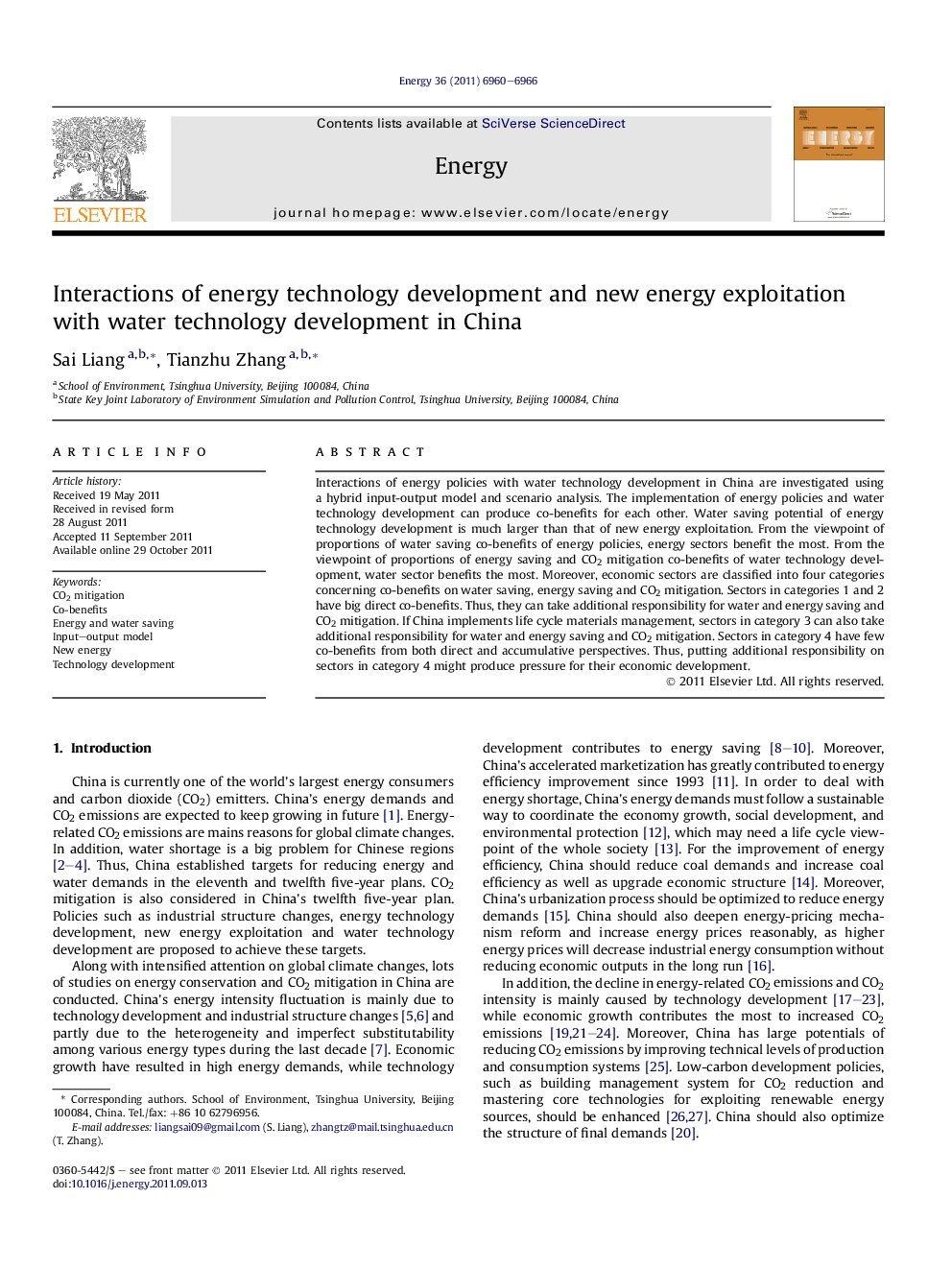| Article ID | Journal | Published Year | Pages | File Type |
|---|---|---|---|---|
| 1734063 | Energy | 2011 | 7 Pages |
Interactions of energy policies with water technology development in China are investigated using a hybrid input-output model and scenario analysis. The implementation of energy policies and water technology development can produce co-benefits for each other. Water saving potential of energy technology development is much larger than that of new energy exploitation. From the viewpoint of proportions of water saving co-benefits of energy policies, energy sectors benefit the most. From the viewpoint of proportions of energy saving and CO2 mitigation co-benefits of water technology development, water sector benefits the most. Moreover, economic sectors are classified into four categories concerning co-benefits on water saving, energy saving and CO2 mitigation. Sectors in categories 1 and 2 have big direct co-benefits. Thus, they can take additional responsibility for water and energy saving and CO2 mitigation. If China implements life cycle materials management, sectors in category 3 can also take additional responsibility for water and energy saving and CO2 mitigation. Sectors in category 4 have few co-benefits from both direct and accumulative perspectives. Thus, putting additional responsibility on sectors in category 4 might produce pressure for their economic development.
► Energy policies and water technology development can produce co-benefits for each other. ► For proportions of water saving co-benefits of energy policies, energy sectors benefit the most. ► For proportions of energy saving and CO2 mitigation co-benefits of water policy, water sector benefits the most. ► China’s economic sectors are classified into four categories for policy implementation at sector scale.
